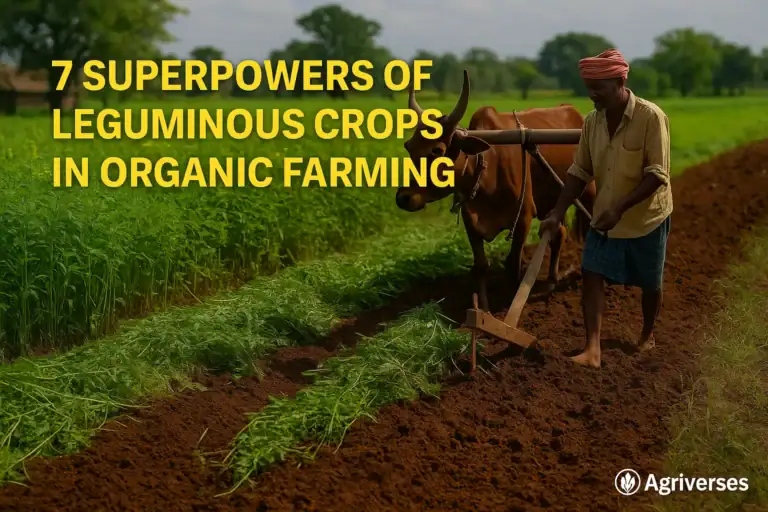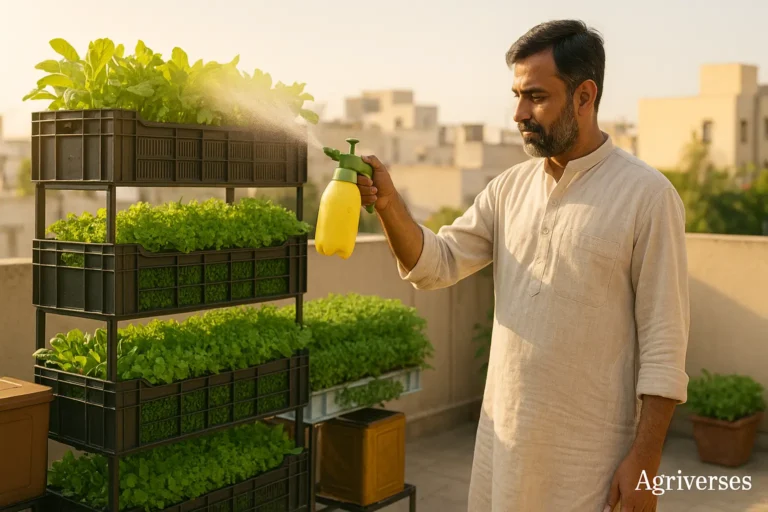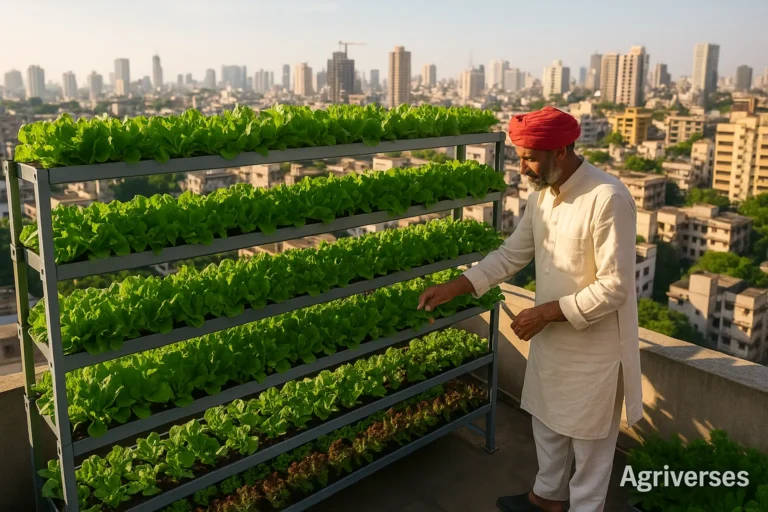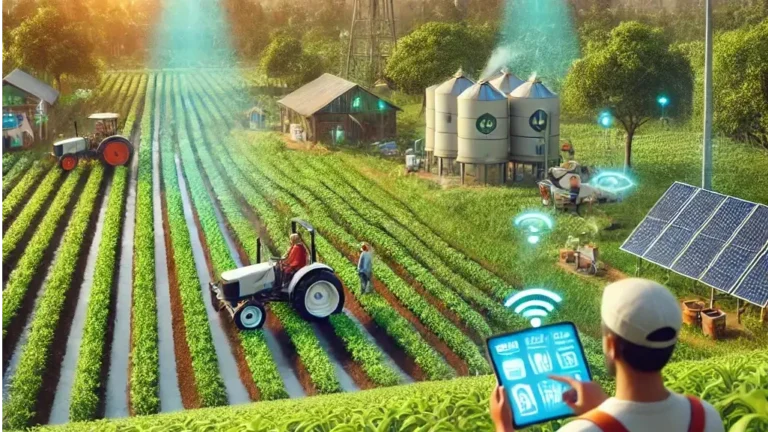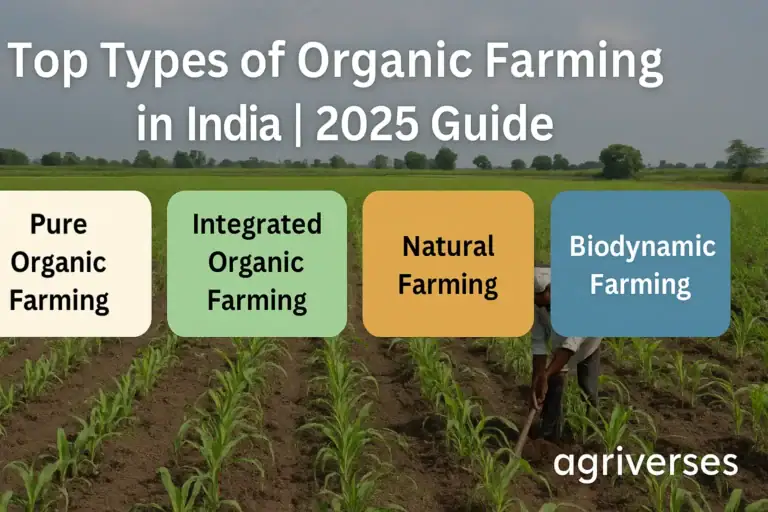Introduction
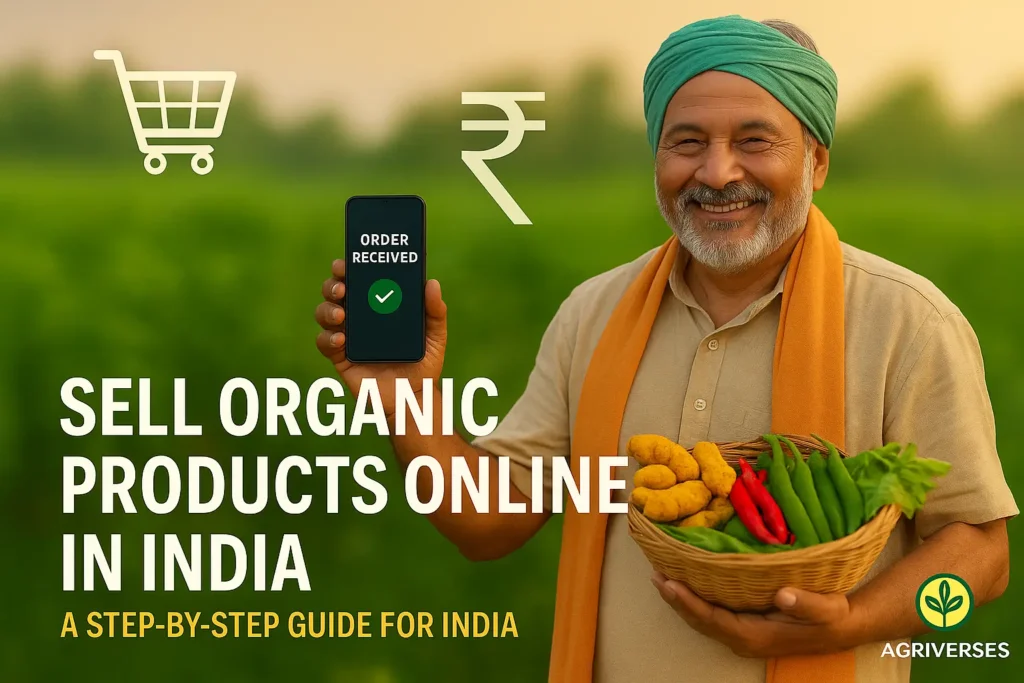
“Farming is fine, sir… but selling online? That is the real struggle,” said Ramesh bhai, a small organic farmer from Azamgarh, as he showed me his fresh vegetables. And he is not alone.
Across India, farmers grow clean, chemical-free food with dedication — but when it comes to how to sell organic products online, most feel lost. No idea where to start, no digital know-how, and middlemen still cutting into profits.
Yet the market is booming — over ₹5,000 crore and growing fast. So, if you are already growing gold, why should it stay hidden?
Let us explain the whole process step by step on how to sell organic vegetables and fruits online.
Step 1: Know Your Product – And Know Your Customer Too
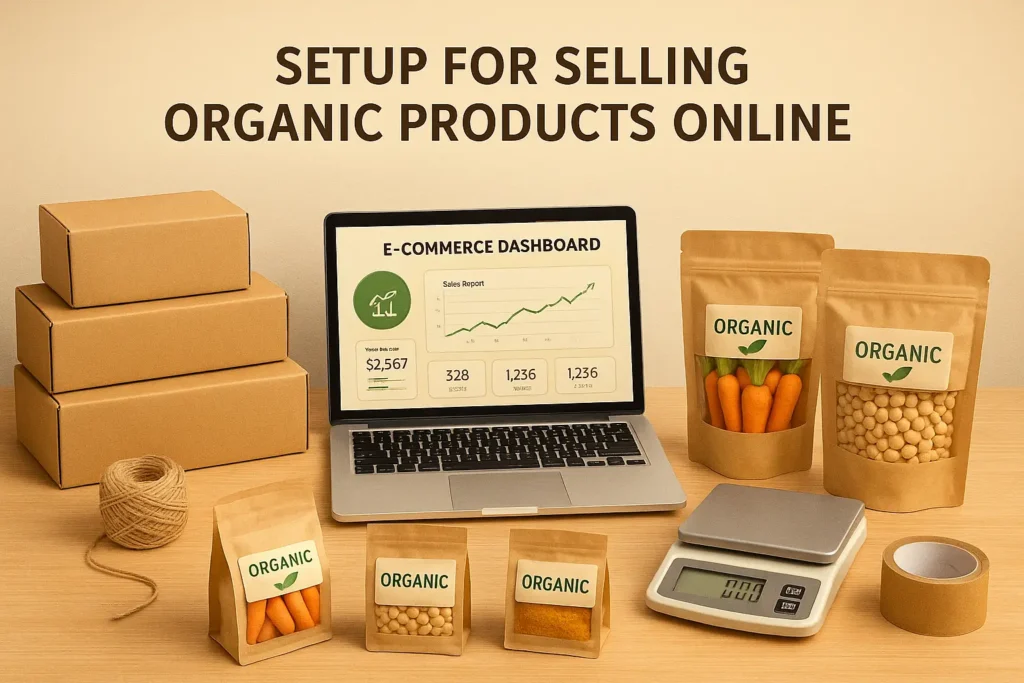
- Before you start to sell organic products online, stop and think — what exactly are you selling, and to whom? Vegetables, wheat, turmeric, ghee or jaggery? And is this product organic certified or just chemical-free?
- Then the second question – to whom is it to be sold? Healthy people in the city? An organic grocery store? Or a cafe owner who is looking for local goods?
When these two things are clear, then you can show your goods in the right way. Every product and every customer has its own style.
If a person is selling 50 kg of jaggery to a sweets shop, then his method will be different. But if someone is selling a 250 ml jar of Desi ghee on Instagram, then he will have to show the photo, branding, and story.
Step 2: Get Your Basics Right – Certification, Packaging & Pricing
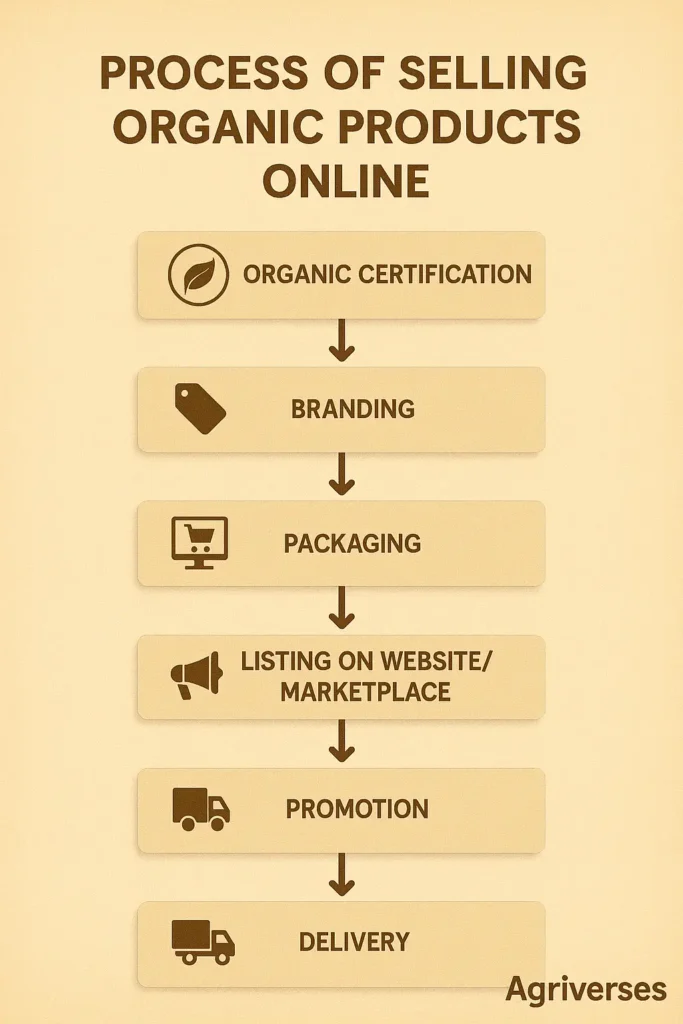
1. Organic Certification: Is it compulsory?
- It is not mandatory, but if you have an Organic certificate then it builds trust. And in the world of business trust is more Important.
- For exports or large marketplaces, you need certification (like NPOP by APEDA or PGS by the government).
- For local or direct selling, self-declaration works initially — especially when you’re just beginning to sell organic products online from your farm, but customers may ask for proof.
You can get started under the Paramparagat Krishi Vikas Yojana (PKVY) or PGS India for small group certification. It is farmer-friendly and low-cost.
2. Packaging That Speaks
- The better the packaging, the greater the chance that people will buy it.
Good packaging = better prices.
- Use eco-friendly, leak-proof materials. Examples are Glass Jars with Metal Lids (for ghee, honey, pickles), Compostable Stand-Up Pouches (made of PLA + cellulose) etc.
- Print basic details: product name, weight, MRP, expiry, ingredients, contact info for transparency.
- Add your brand name and a story — Like this: “From Ramesh Bhai’s Organic Farm in Azamgarh”.
Example: Instead of a nameless brown pouch, a labeled “Pure Desi Haldi – Grown on Pesticide-Free Soil in Bundelkhand” sells faster.
3. Pricing That is Fair
- Add up production cost + packaging + transport + margin.
- Do not underprice to compete — organic customers pay for quality, not quantity.
- Research competitors online (Amazon, Organic India, 24 Mantra, etc.) to set benchmarks.
Step 3: Choose Your Selling Platform – Where to Sell Organic Products
Look brother, the goods are ready — but if you choose the wrong place to sell organic products online, then all your hard work may go waste. Just like in farming, it is important to mix soil and seeds, similarly, you need the right platform to sell online.
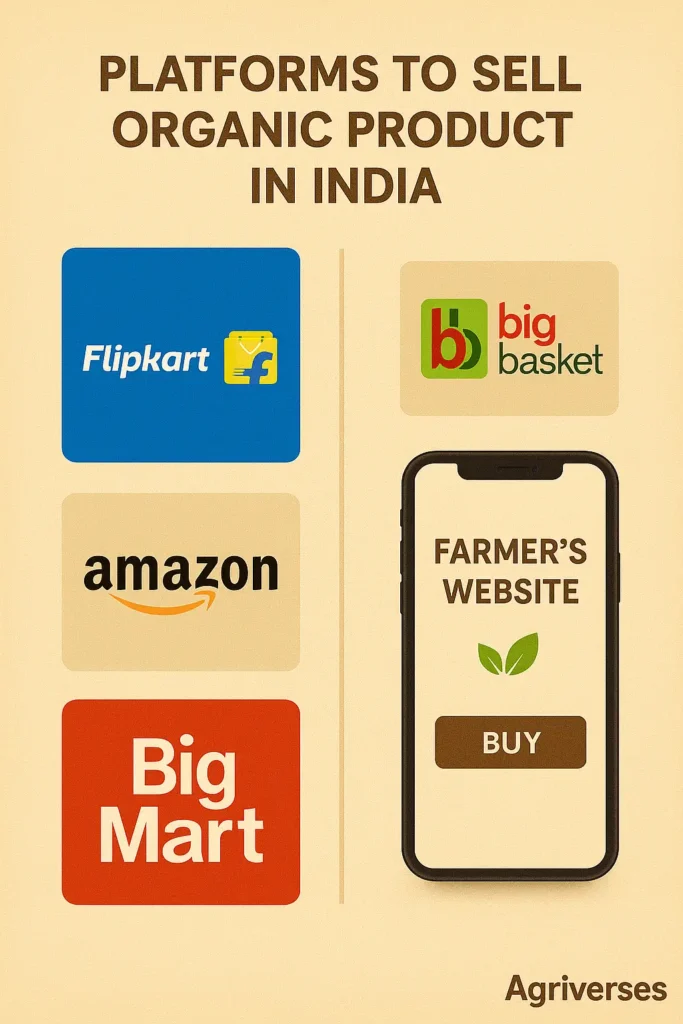
Now there are three ways:
1. Big market apps – places like Amazon, Flipkart, Jiomart
Thousands of people are already buying these. You can become a seller, you can list. You can get the goods delivered to the whole of India while sitting at home.
But brother, this place is not for everyone. Commission will be cut, there is a chance of losses too, and competition is god’s mercy.
What kind of goods will sell here? Packaged – like a bottle of honey, pouches of spices, pulses or oil.
2. That website where only organic goods are sold
Have you heard of farmizen? Or organic mandis? Only those people come to such a place who search for real organic – health conscious people, gym people, or mothers for their children.
Stories are also sold here. If you can tell how the goods were grown, from which living creature, in which soil – then these people listen.
For whom is it right? Those who have less goods, but the goods are real. And who knows how to build trust with the customers.
3. Your shop – i.e. Instagram, WhatsApp, your website
The simplest and direct way. There is no middle ground. Direct customers, direct money.
Send photos on WhatsApp, show the story on Instagram, upload videos on YouTube – and people connect. Slowly a website can also be made.
This is for those people who want to make a name for themselves. Their brand. Just like I making “Agriverses” – people trust you, repeat orders.
My advice – start with WhatsApp and Instagram.
Make a website later. First add a few customers, take feedback, and understand what people like. Then slowly it will become a big business.
Step 4: Build Trust and Visibility – Branding, Storytelling, and Reviews
Look brother, the city customer does not just buy the product – he gets to know from whose hands the product has come. Nowadays people want to hear your story. And if you show them from the heart that your product is original, your work is trustworthy – then understand that half the work is done.
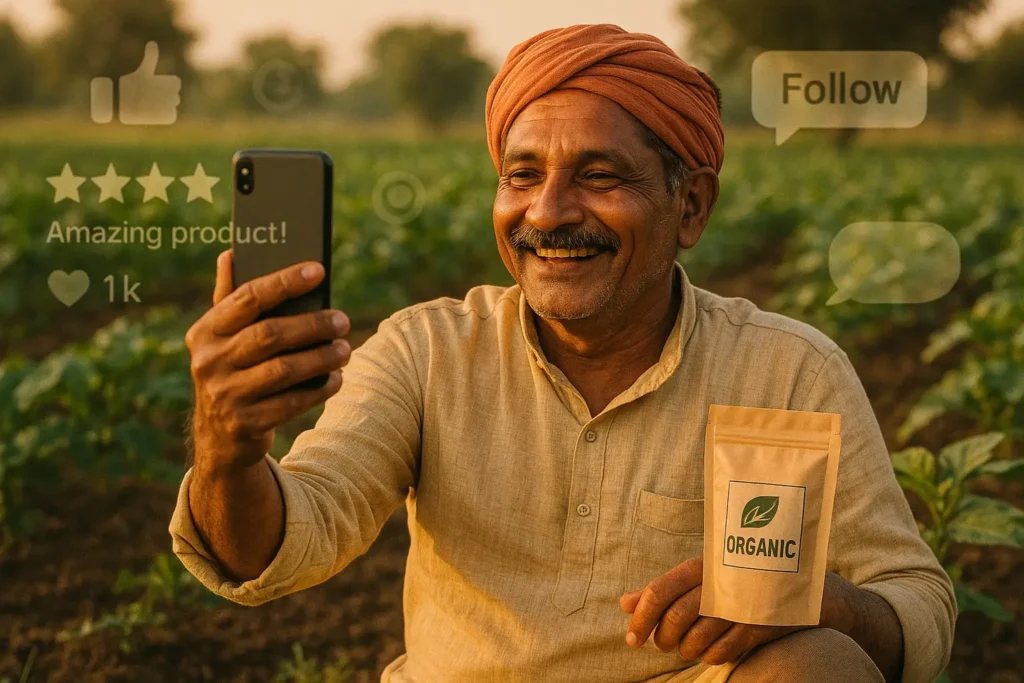
1. Share your story – understand the power of the video
Pick up the phone and make small clips of the farm. Showing the soil, videos of the farmers moving around, the condition of the fields after the rain, your animals, or how you are making fertilizer – people want to see everything.
And yes, do not forget to show your face. Speak in your own voice. When customers hear you, see you – that is when they build trust.
2. Use Powerful Branding:
Keep a name that touches your heart. Like – Ghee from the village, Desi Daliya, Sundar Maati Organics. A name that shows your roots. Logo? Make it yourself on canvas or it can be designed on Fiverr for ₹300-₹500. And the tagline?
Write what is in your heart – “Chemical-Free Goodness from My Family’s Farm.” Or something in your own language – “Soil from the village, tastes like mother’s hands.”
3. Collect Testimonials:
Whether it is a small order or a big one, tell every customer –
“Bhai, send a photo or a 2-line feedback. It will be very helpful.”
Then post the same review on WhatsApp status, Instagram story, or on your website (ask a little before posting!). People see what others are saying — and that trust helps you sell organic products online more confidently and consistently.
Always remember this line:
“One happy customer can bring ten new customers.”
Step 5: Logistics – Shipping, Payments & Customer Service
Now suppose someone ordered your ghee or turmeric online… but now the question is – how to send the goods? How to get the money? And if the customer asks something, what should I answer?
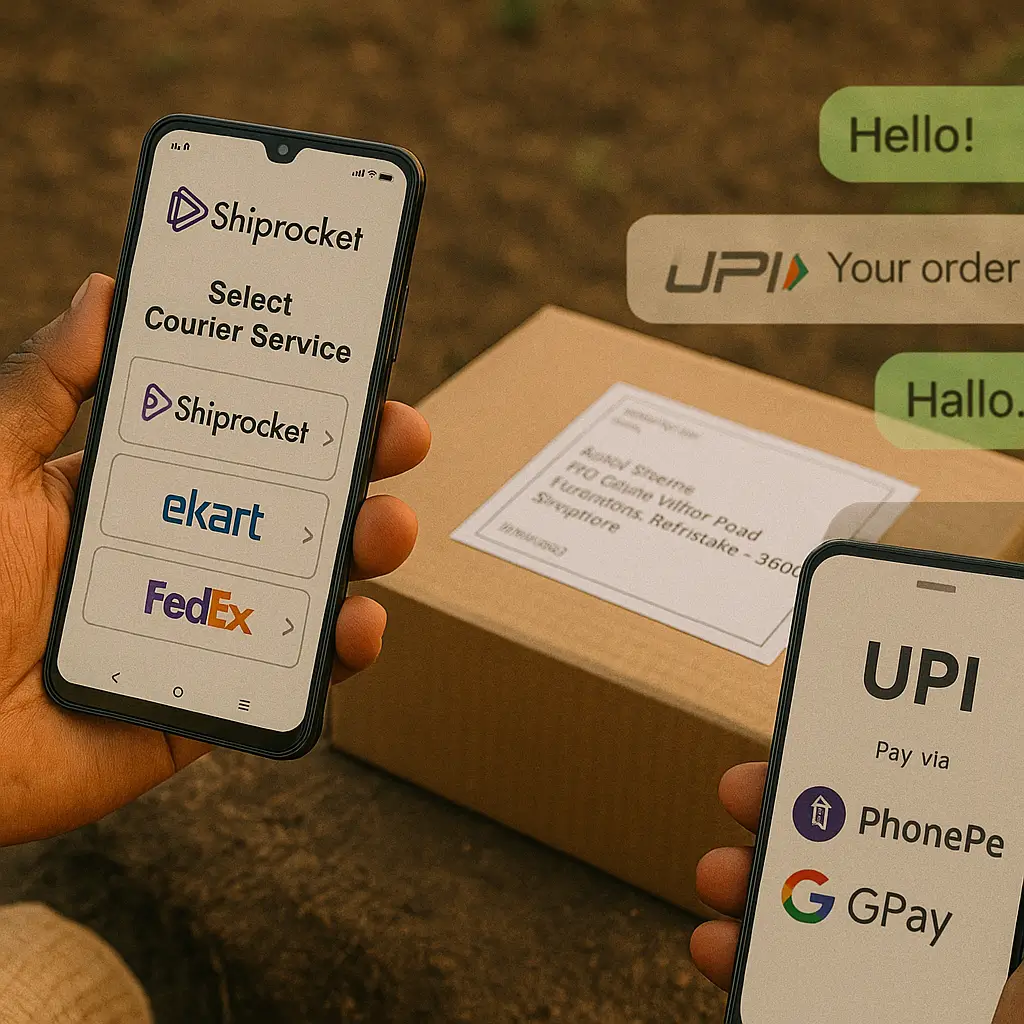
This is where most of the farmers get stuck. But do not worry – if the planning is right, everything is easy.
1. Delivery Partners:
First of all, choose a courier partner. Shiprocket is a good option for beginners. It compares the rates of many couriers like India Post, Delhivery, Ekart, Bluedart for you. And also arranges pickup – you do not need to run around.
Keep In your minds that, First start delivery in your district or nearby cities. Fast delivery builds people’s trust.
2. Payment scene – how will I get money?
Keep it simple in the beginning – UPI, Google Pay, PhonePe are the easiest.
If you have a website, use payment gateways like Razorpay, Instamojo, or Cashfree. They also send automatic bills and SMS – it gives a professional touch.
And yes – it is important to keep the option of Cash on Delivery (COD) as well, especially for new customers who are ordering for the first time.
3. Customer Support:
Service is also important brother! If the customer asks, “Bhaiya where did my packet reach?” – then answer immediately. If you keep quiet for a long time, it will not come again.
✅ Send tracking details immediately, stay connected on WhatsApp, and if there is an issue, handle it politely – all this makes your customer relationship strong.
Put a direct WhatsApp chat button on the website or social media – so that people can talk to you directly. There is no need for too formal customer care, just answer on time.
Comparison: Marketplace vs Own Website vs Social Media
| Feature | Marketplace (Amazon) | Own Website | Social Media (Instagram) |
|---|---|---|---|
| Setup Cost | Medium | Medium to High | Low |
| Reach | High | Moderate | Depends on content |
| Control | Low | High | Medium |
| Branding | Limited | Full | High |
| Commission | 10–25% | 2–5% (payment fees) | Nil |
| Best For | Packaged Goods | Brand Building | Story-based Selling |
Conclusion:
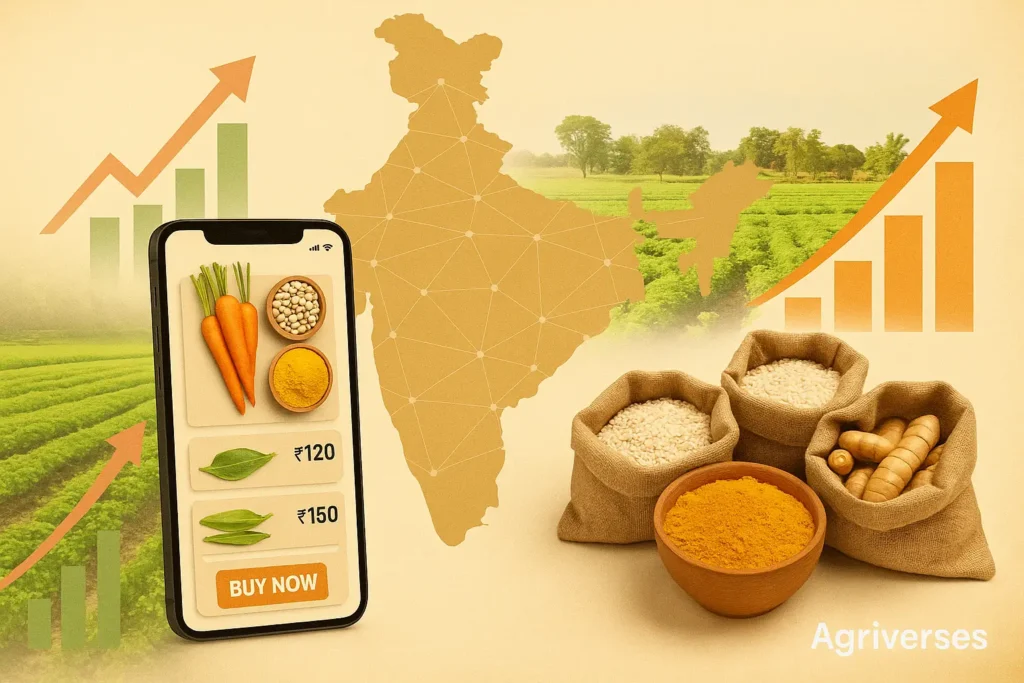
Start your story, the market is waiting for you. You are already doing organic farming, now is the time to take it to the world. Without English, without a showroom – just WhatsApp, a true story, and a little digital Jugaad. Walk slowly, but start for sure. Because your soil does not only grow crops, but also trust.
You do not need fancy degrees or a shop in the city to sell organic products online — just real food, real intent, and real stories.
Continue your organic journey – comment, share articles and read Agriverse daily!
Is certification mandatory for selling organic food online?
No, but it is helpful. You can sell chemical-free food without certification if you are transparent and target direct customers. For exports or marketplaces, certification is required.
How do I market my products without spending on ads?
Use free tools: WhatsApp status, Facebook groups, Instagram Reels, and local influencers. Your story and honesty are your best marketing tools.
Can I sell raw vegetables and milk online?
Yes, but it is challenging. Focus on local delivery. Use WhatsApp groups, RWA societies, and tie-ups with city organic stores.
I don’t know English. Can I still sell online?
Absolutely. Use Hindi or regional languages. Use voice messages, regional captions, and tools like Google Translate. Authenticity matters more than grammar.

